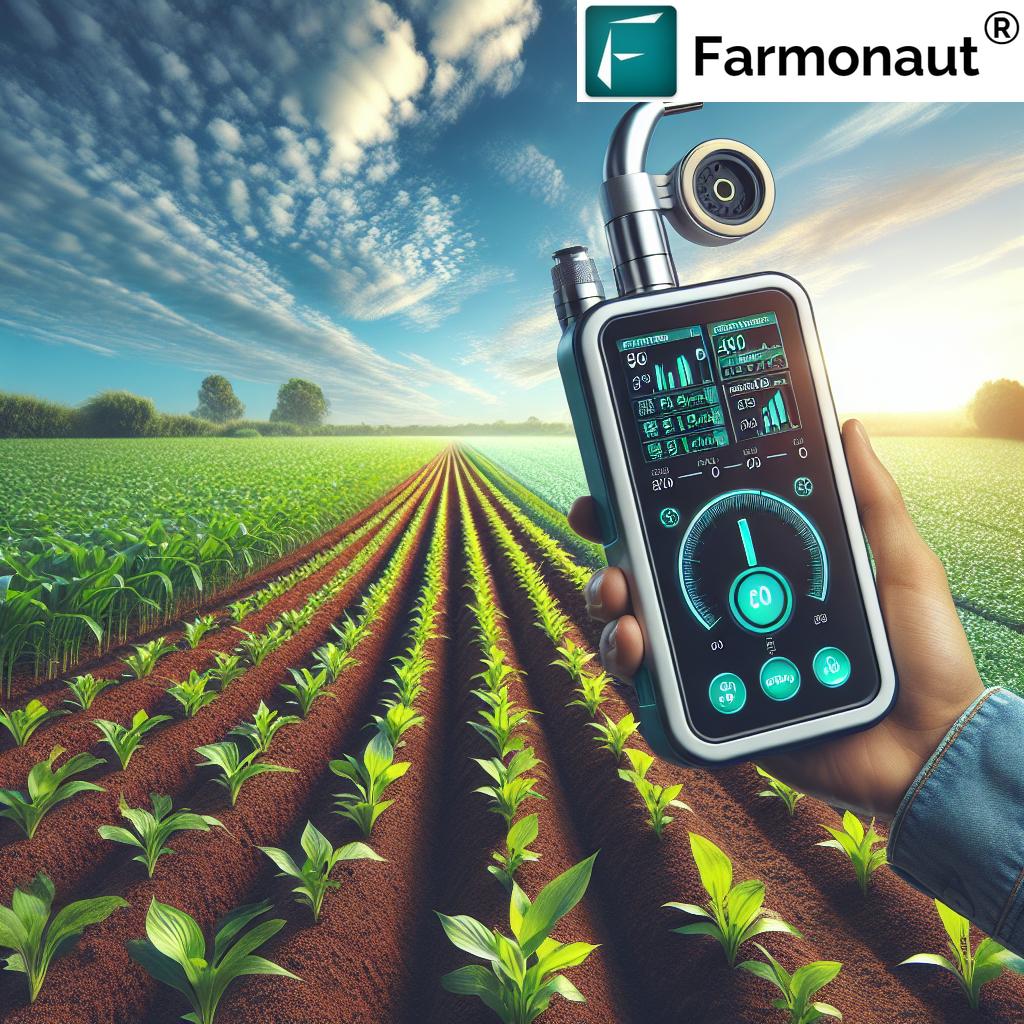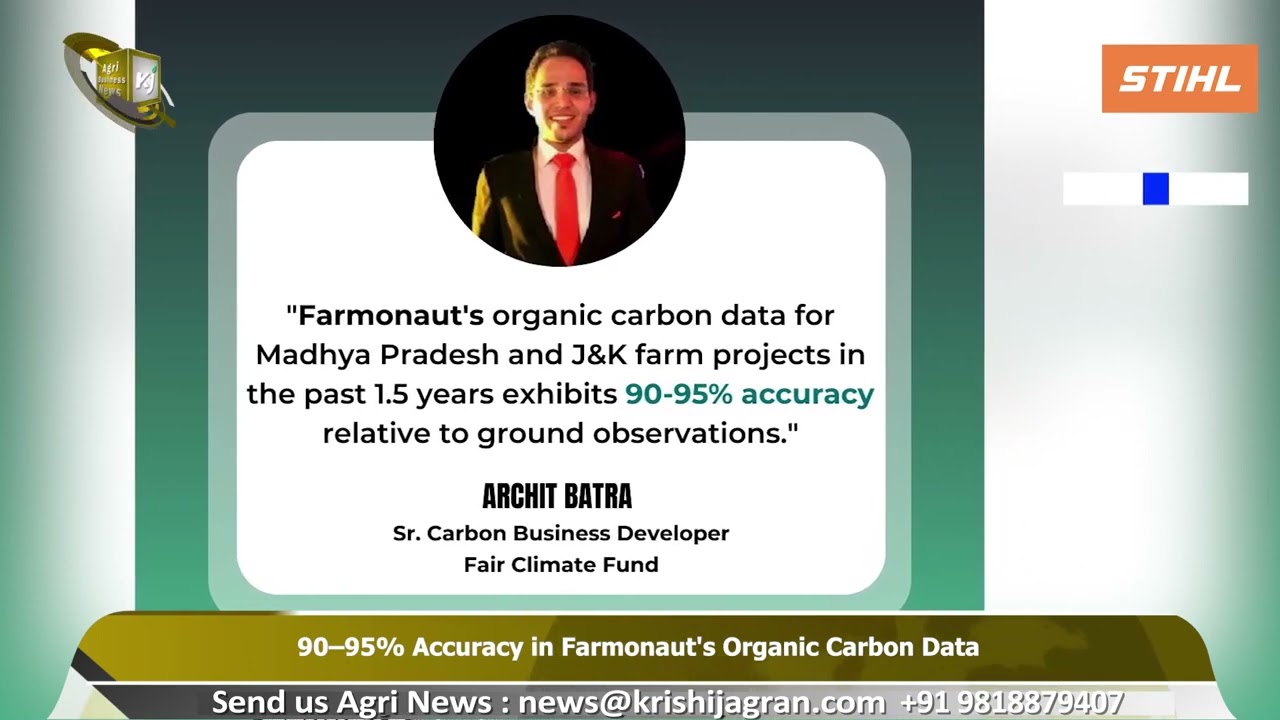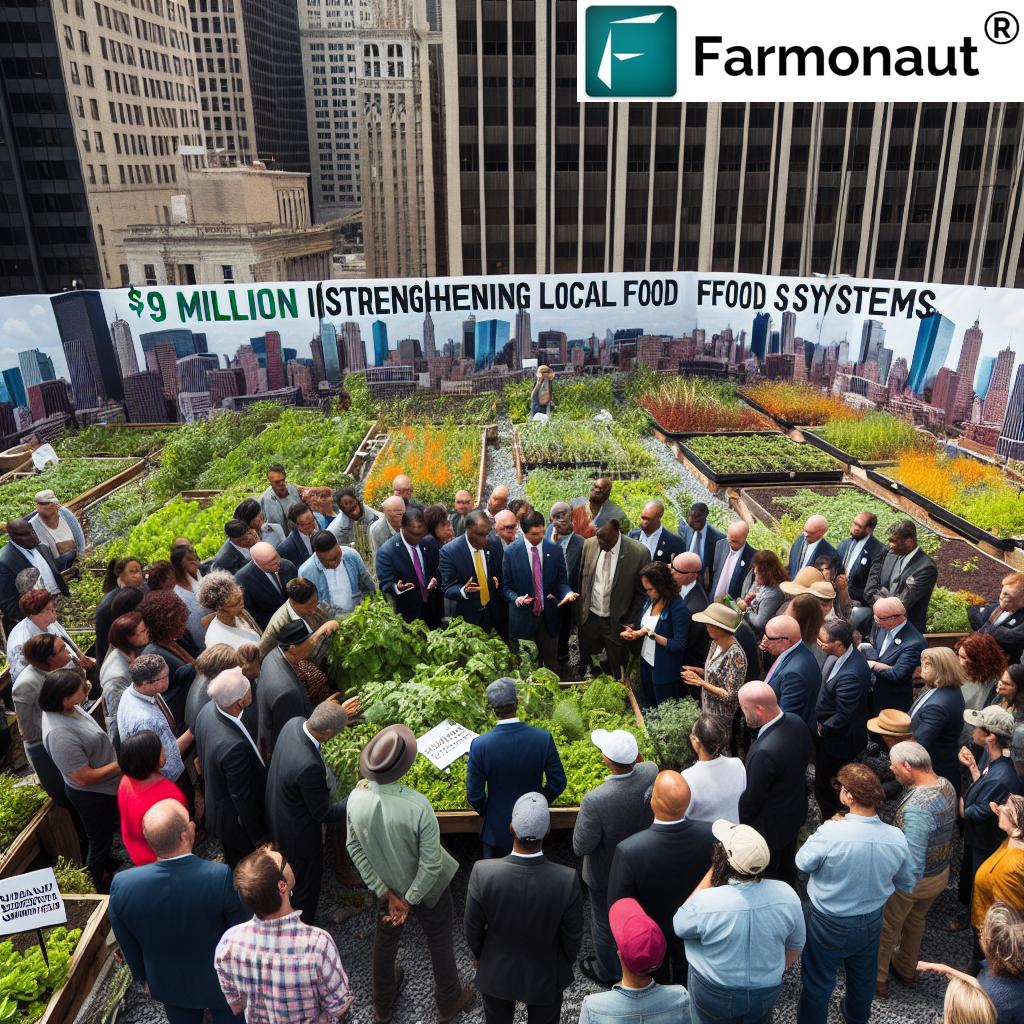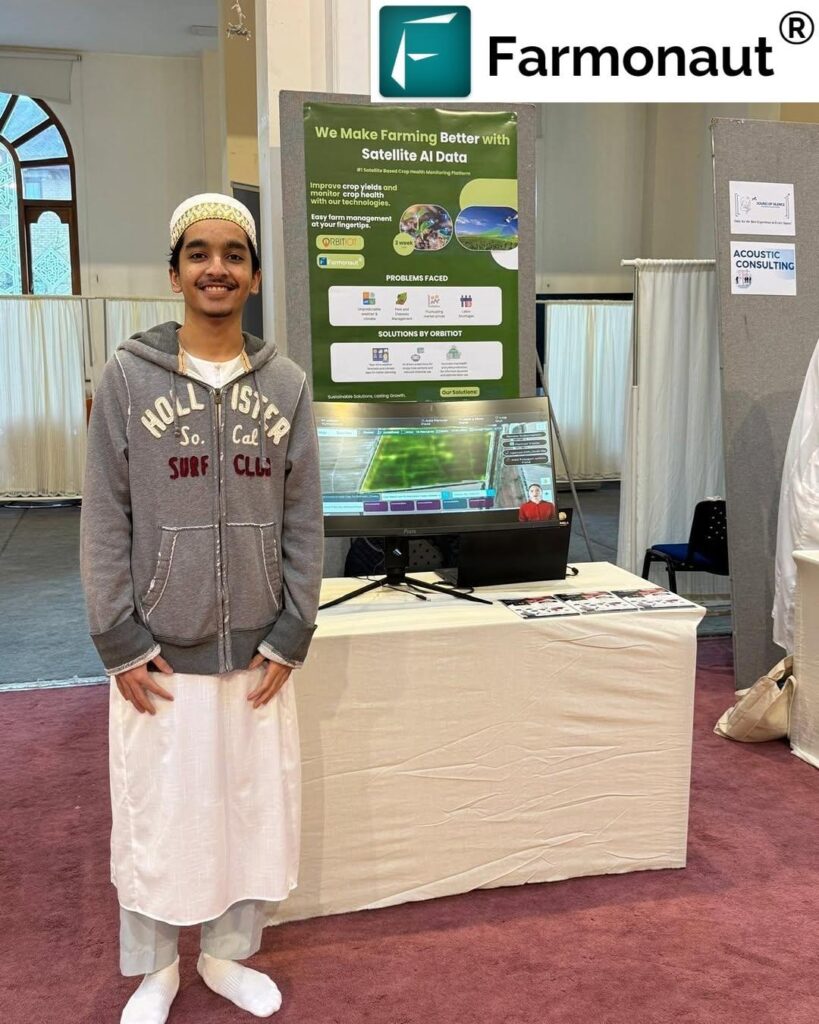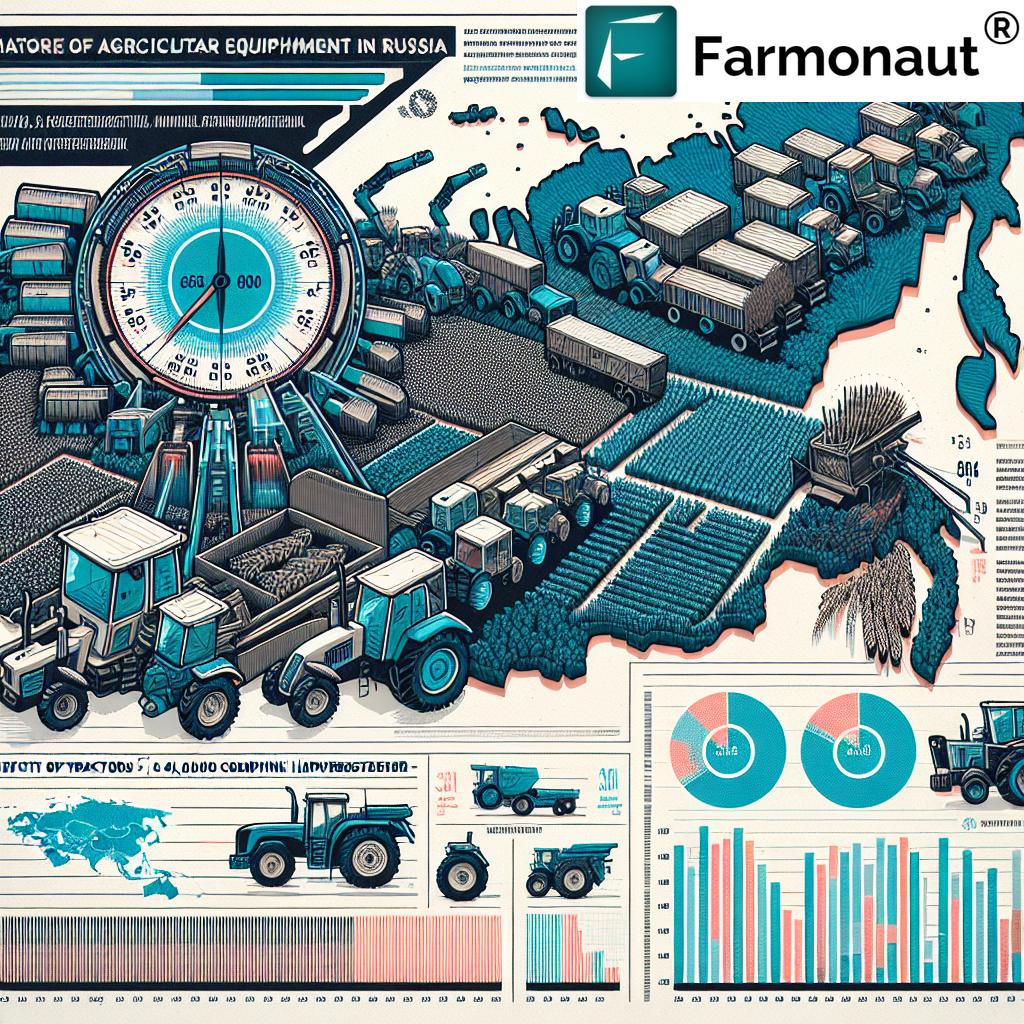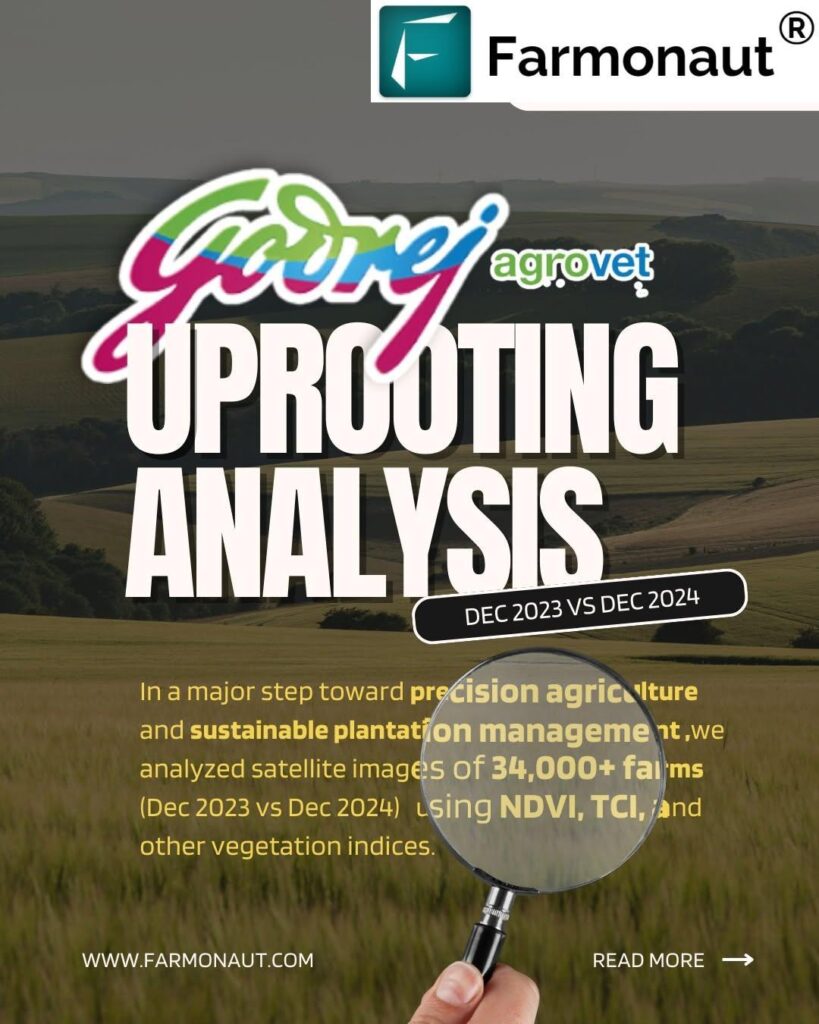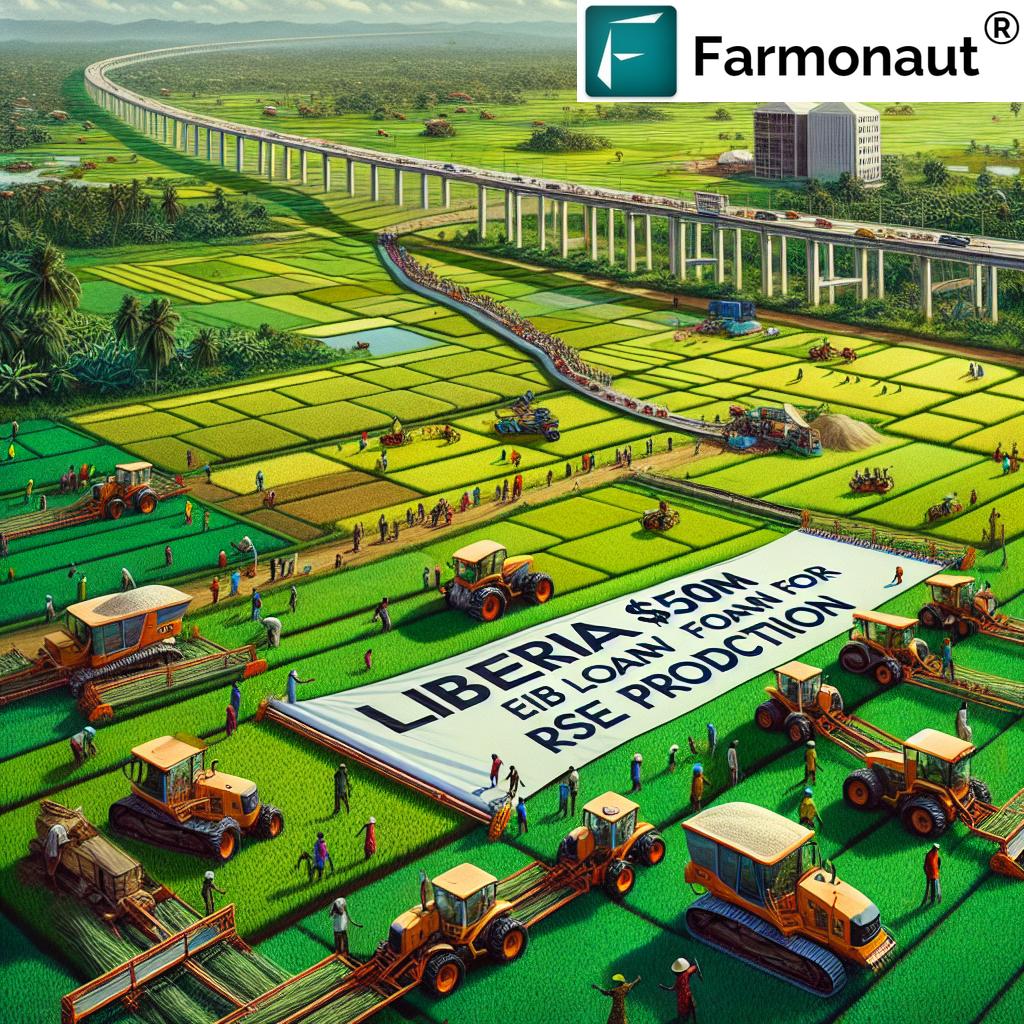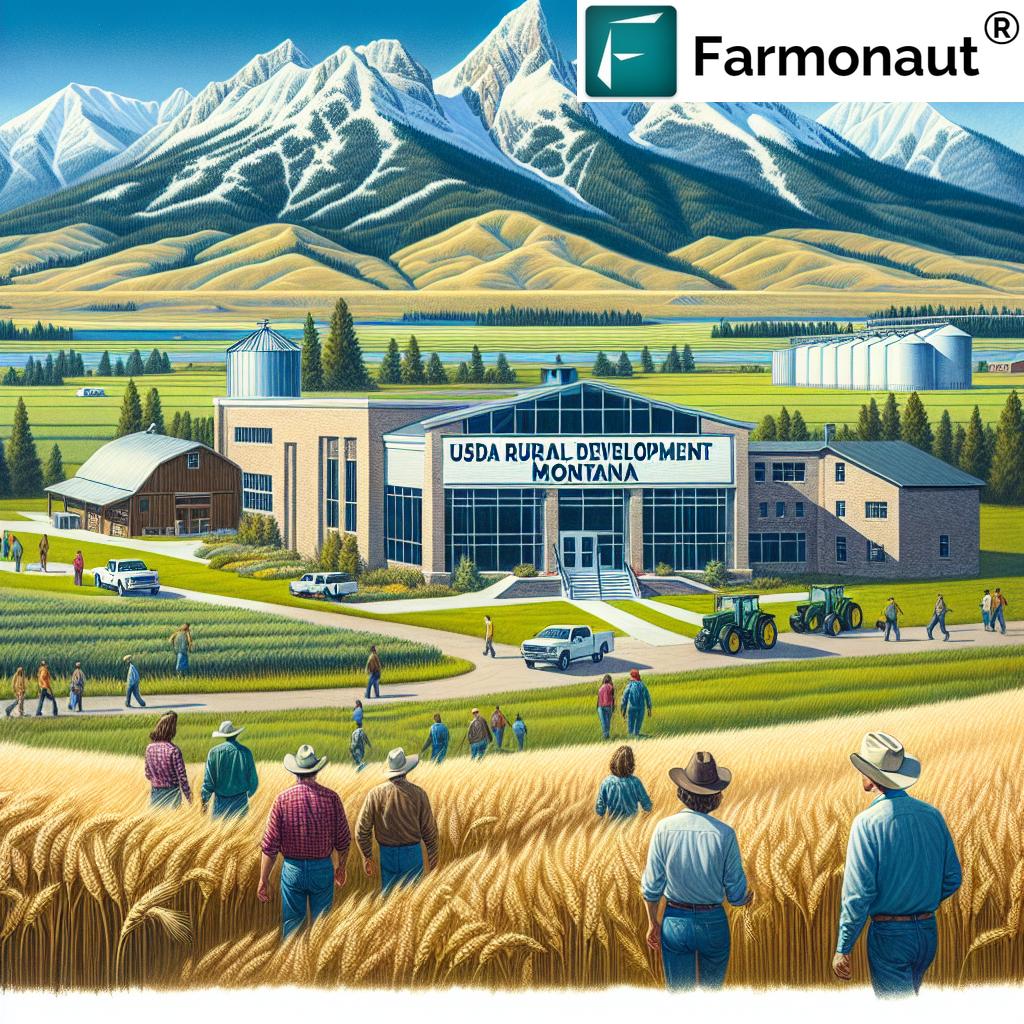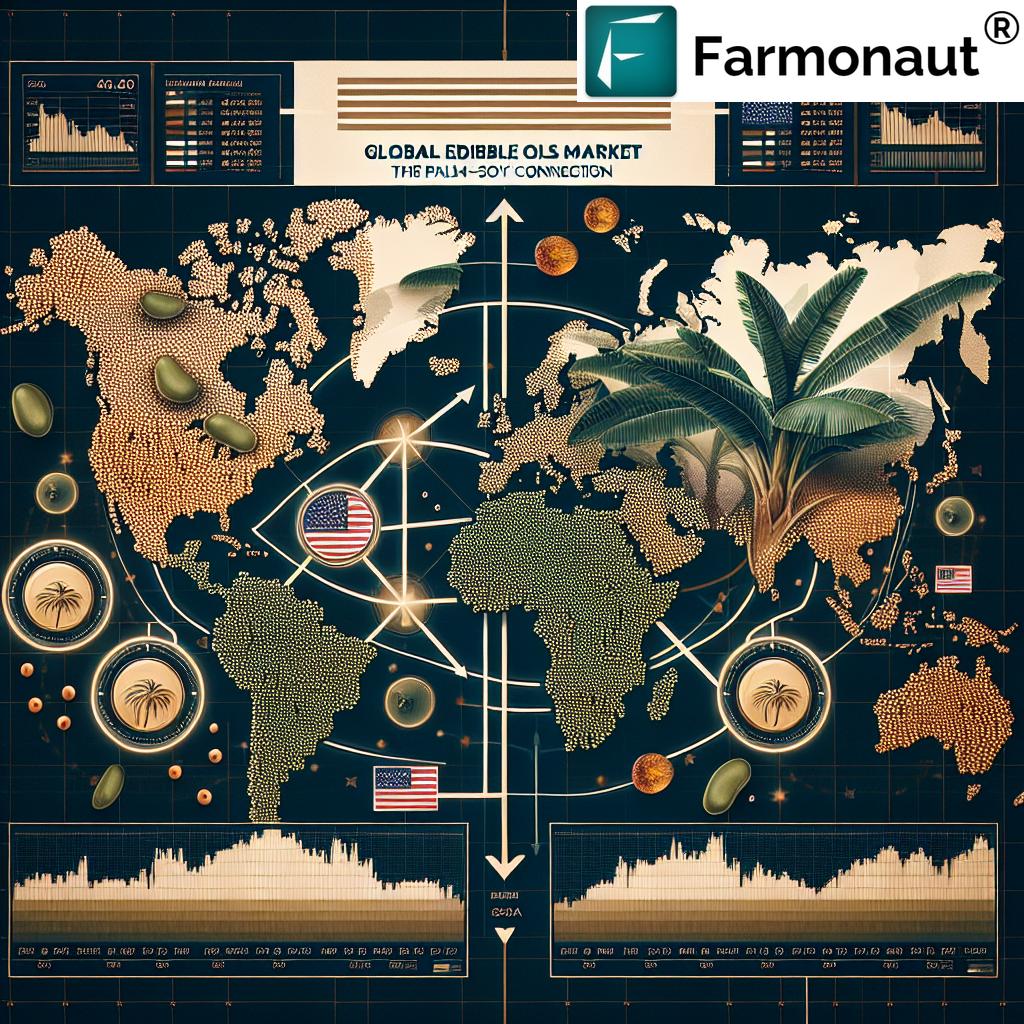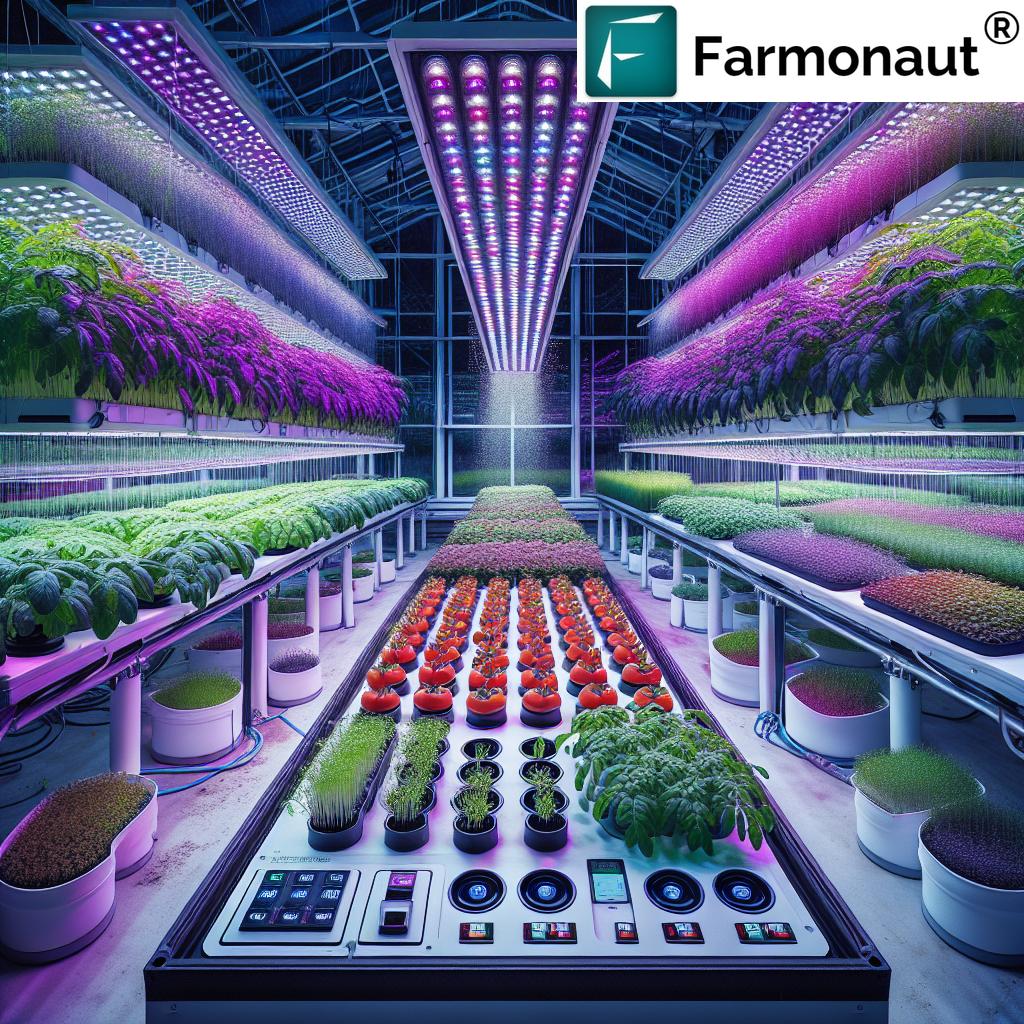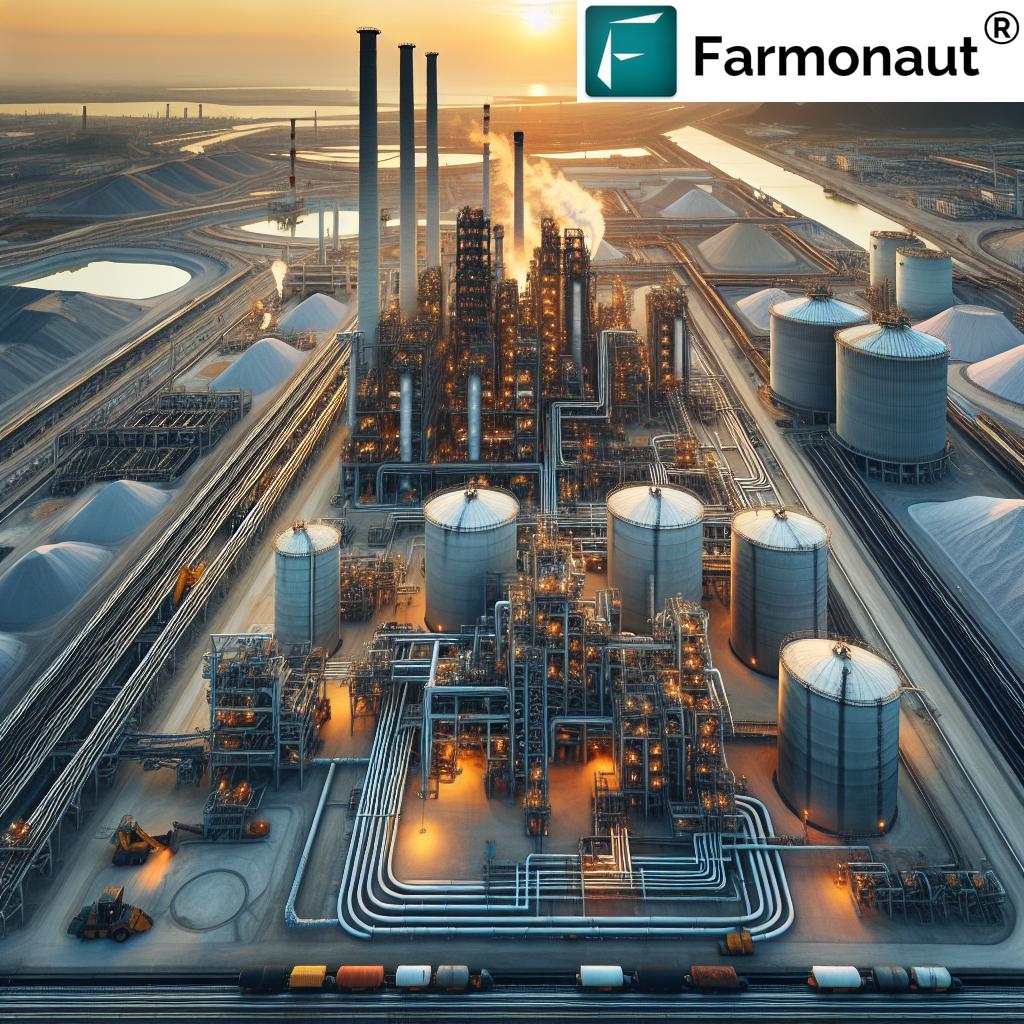Soil Analysis Technology Market Booms with Game-Changing Innovations
“The global soil analysis technology market is projected to surpass $1.2 billion by 2027, driven by rapid AI integration.”
Table of Contents
- Introduction: The Pivotal Role of Soil Analysis Technology in Modern Agriculture
- Unveiling the Soil Analysis Technology Market Boom
- Advancements in Soil Analysis Technologies
- Comparative Innovations Impact Table: Technologies & Impact
- Regional Insights: North America, Europe, Asia Pacific
- Challenges and Considerations in the Soil Analysis Market
- Farmonaut: Transforming Precision Agriculture Solutions
- Future Outlook: Driving Sustainability and Efficiency
- Frequently Asked Questions (FAQs)
Introduction: The Pivotal Role of Soil Analysis Technology in Modern Agriculture
In recent years, we have witnessed an unprecedented surge in demand for sustainable, data-driven agriculture solutions that accelerate crop yield optimization while safeguarding environmental health. At the heart of this agricultural revolution is soil analysis technology, a game-changing set of tools and methods transforming how farmers, land managers, and the larger agri-food ecosystem approach farming, forestry, and resource management.
By leveraging advanced soil testing methods, precision agriculture solutions, and AI-powered platforms, we can accurately assess soil fertility, nutrient content, and environmental conditions across vast tracts of land. This enables informed decisions that optimize inputs, enhance crop productivity, foster sustainability, and ultimately drive resilience in the face of evolving climate and market pressures.
Throughout this comprehensive guide, we will explore the rapid advancements in soil analysis technologies, the boom in the global market, the integration of AI and remote sensing in agriculture, and how leading-edge platforms like Farmonaut are making modern farming more efficient, affordable, and accessible.
“Precision agriculture solutions can increase crop yields by up to 30% through advanced soil analysis and data-driven farming.”
Unveiling the Soil Analysis Technology Market Boom
The soil analysis technology market is in the midst of a remarkable expansion, fueled by global trends in sustainable agriculture, increasing technology adoption rates, and a shared need to balance productivity with planet-friendly practices. By 2023, precision agriculture solutions already represent a $9.59 billion sector, forecasted to soar to $41.27 billion by 2033, underlining the rapid pace of adoption and innovation.
We are seeing this growth catalyzed by several key trends:
- Heightened demand for sustainable food production to feed a growing population while minimizing environmental impact.
- Increased adoption of AI, IoT, and advanced sensor systems that yield rapid, actionable soil insights.
- Government incentives and regulations pushing for the adoption of modern agricultural and forestry practices.
- Rising use of data and digital platforms in crop management, monitoring, and yield optimization.
This evolution marks an inflection point, setting the stage for next-generation soil health monitoring, risk management, and smart farming at a truly global scale.
Advancements in Soil Analysis Technologies
In the past decade, soil analysis technologies have progressed from manual laboratory tests to a suite of sophisticated, digitally enabled, and AI-integrated platforms. We now have myriad methods for extracting, analyzing, and acting upon soil data with greater accuracy, efficiency, and accessibility than ever before. Let’s delve into the key developments revolutionizing the field:
1. Digital Soil Mapping (DSM): Creating High-Resolution Soil Maps
With Digital Soil Mapping (DSM), we utilize cutting-edge geospatial data, advanced algorithms, and satellite imagery to produce detailed, actionable soil property maps. Combining lab tests and in-field samples with remote sensing and geospatial analytics enables us to:
- Visualize spatial variability in soil fertility, nutrient content, and physical conditions.
- Tailor precision agriculture solutions for specific field zones.
- Optimize fertilizer and irrigation strategies based on real soil needs, not averages.
DSM represents a leap forward in farming, allowing scalable, low-cost mapping and management of entire agricultural areas with transformative implications for productivity and sustainability.
Explore Large Scale Farm Management Solutions to streamline resource allocation and decision-making using Farmonaut’s digital mapping tools.
2. Portable Soil Sensors: Real-Time, On-the-Go Soil Health Monitoring
Handheld, portable soil sensors employ Near-Infrared (NIR) spectroscopy, electrochemical sensors, and other advanced sensing principles to provide field-ready, real-time soil testing. Their main advantages include:
- Immediate measurement of pH, moisture, temperature, and nutrient levels.
- Reduction in laboratory dependency, bringing analysis to the field.
- Empowering smallholders and large-scale producers alike to make timely decisions for crop health and pest management.
These devices enhance the efficiency and rate of data collection, making smart farming accessible to a broader range of users.
Discover Farmonaut’s Carbon Footprinting tools to measure and reduce your farm’s environmental impact with soil and emissions data.
3. Lab-on-a-Chip Technology: Miniaturizing Advanced Soil Testing
Lab-on-a-Chip devices pack analytical laboratory processes into a portable microchip, enabling highly efficient and rapid analysis of multiple chemical and biological soil parameters in the field:
- Effortless detection of soil nutrient concentrations, contaminants, and microbial activity.
- Reduction in time-to-result compared to traditional laboratory methods.
- Cost-effective testing that supports both large-scale agribusinesses and smallholder operations.
The miniaturization trend is pivotal in bringing high-precision testing and monitoring to even remote agricultural regions.
4. Artificial Intelligence (AI) & Machine Learning (ML) in Agriculture
The adoption of artificial intelligence in agriculture is fundamentally transforming how we interpret soil data:
- AI & ML algorithms rapidly analyze large datasets, identify trends, and recommend optimal soil and crop management strategies.
- Data-driven insights ensure accurate soil assessments and resource planning.
- Advanced decision-support systems personalize recommendations for users across scales.
Platforms like Farmonaut deliver these advantages through features such as their Jeevn AI farm advisory, which helps farmers and land managers optimize every stage of the crop lifecycle.
Access Real-Time AI-based Advisory through Farmonaut’s web and mobile apps for smarter crop management.
5. Drones & Remote Sensing in Agriculture
By arming drones with multispectral and hyperspectral sensors, we unlock the power of remote sensing in agriculture:
- Gathering high-resolution images to monitor variability in soil moisture, organic matter, and fertility.
- Scalable monitoring of large-scale agricultural areas previously impossible to assess in detail.
- Early detection of anomalies, enabling farmers and agribusinesses to intervene before problems escalate.
Remote sensing is essential for sustainable farming practices, improving yield and input efficiency for users at every level.
Streamline Fleet & Resource Management to coordinate remote sensing missions and resource use, reducing operational costs.
6. Blockchain-Based Traceability & Security in Agri-Food Supply Chains
Blockchain technology addresses key data security and traceability concerns in agriculture:
- Ensures every stage of a product’s journey from farm to table is transparent, immutable, and secure.
- Protects farm data privacy and builds trust among all stakeholders.
- Verifies compliance with quality standards and sustainable practices, facilitating international trade.
Farmonaut enables product traceability using blockchain systems:
Learn About Blockchain-Based Traceability for food and textile supply chains, ensuring safety and authenticity.
Comparative Innovations Impact Table: Technologies & Impact
| Technology/Innovation Name | Year Introduced (Est.) | Key Features | Est. Adoption Rate (%) | Avg. Yield Improvement (%) | Environmental Benefit | Precision Level |
|---|---|---|---|---|---|---|
| Digital Soil Mapping (DSM) | 2012 | Satellite imagery, geospatial analytics, field data integration | 37 | 18–25 | Reduces over-fertilization and runoff; enhances land stewardship | High |
| Portable Soil Sensors | 2015 | NIR, pH, EC sensors; smartphone connectivity | 33 | 12–20 | Reduces lab waste; enables targeted input application | Medium–High |
| AI/ML-Based Soil Analysis | 2018 | Predictive analytics, pattern recognition, automated reporting | 27 | 20–35 | Lowers resource use; reduces emissions | High |
| Drones & Remote Sensing | 2014 | Multispectral/hyperspectral imaging, aerial mapping | 30 | 15–28 | Monitors environmental health at scale | High |
| Lab-on-a-Chip Devices | 2019 | Miniaturized in-field testing, rapid multi-analyte detection | 14 | 10–20 | Reduces chemical inputs; increases diagnosis speed | Medium–High |
| Blockchain Traceability Systems | 2020 | Immutable records, supply chain transparency, auditing | 8 | 5–12 | Anti-fraud; reduction in counterfeit agri-products | High |
Regional Insights: North America, Europe, Asia Pacific
The global soil analysis technology market manifests distinct dynamics across key geographical regions, shaped by technology adoption rates, agricultural practices, regulatory frameworks, and investment in R&D.
North America
- Leading with 35% global market share, North America leverages a highly advanced agri-tech ecosystem and rapid deployment of precision agriculture solutions.
- The United States spearheads adoption, driven by research institutions, data-driven agri-businesses, and supportive policies.
- Farmers regularly utilize advanced soil health monitoring and remote sensing in agriculture to maximize efficiency and yields.
Europe
- Accounts for 30% of the global market share, thanks to a focus on sustainable farming practices, compliance with environmental standards, and stringent soil health regulations.
- Countries like Germany, France, and the Netherlands pioneer the use of digital soil mapping, blockchain-based traceability, and lab-on-a-chip diagnostics.
- There is a deep synergy between advanced soil testing methods and sustainable land management in both agriculture and forestry.
Asia Pacific
- Rapidly increasing in market dominance, now at 34.7% due to robust agri-sector growth, capacity-building initiatives, and technological development.
- India and China, in particular, are doubling down on modernizing farming through portable sensors, AI, and digital advisory platforms.
- Widespread crop yield optimization is closely linked to technology-enabled soil monitoring and data-driven decision-making.
Globally, these trends highlight our collective move towards efficient, sustainable, and smart agriculture.
Farmonaut: Transforming Precision Agriculture Solutions Worldwide
Amidst these market advancements, Farmonaut stands out as a pioneering provider of satellite-based, AI-powered farm management solutions designed to make precision agriculture affordable and accessible for everyone.
- Real-Time Crop Health Monitoring: Farmonaut’s multi-spectral satellite imagery allows for precise tracking of crop vigor (NDVI), soil moisture, nutrient status, and environmental stress across fields and even whole plantations.
- AI Advisory & Decision Support: The proprietary Jeevn AI system analyzes farm data, environmental variables, and user inputs to deliver informed crop, irrigation, and pest management recommendations conveniently via Android, iOS, and web apps.
- Blockchain-Based Product Traceability: Farmonaut integrates blockchain for supply chain transparency and food safety; ensuring every crop’s journey is documented and secure from farm to consumer – ideal for agricultural exporters and the food industry.
- Resource & Fleet Management: With dedicated tools, large agri-enterprises and cooperatives can track fleets, schedule maintenance, and manage field operations more efficiently, cutting costs and reducing carbon footprint.
- Carbon Footprinting: Farmonaut delivers up-to-date data on farm emissions and interventions, helping growers and organizations meet environmental compliance and sustainability goals.
The core value proposition? Cost-effective scalability, real-time insights, and accessibility from anywhere — without the heavy hardware investment needed for traditional precision agriculture tools. Whether you are a smallholder in Asia-Pacific, a cooperative in Europe, or a research body in North America, Farmonaut empowers informed, profitable, and sustainable farming decisions.
Leverage Satellite-Based Crop Insurance & Loans: Banks and insurers can safely verify crops using Farmonaut’s systems, streamlining access to financing for farmers.
For developers and agri-tech innovators:
Farmonaut Satellite Weather Data API — Bring precision agri-data directly into your platform. Detailed API docs available here.
For prime advice on forestry and plantation crop management: Forestry & Plantation Crop Advisory using advanced digital mapping and analytics. Optimize farming at any scale!
Challenges and Considerations in the Soil Analysis Technology Market
While soil analysis technologies are rapidly transforming global agriculture, there are critical challenges we must collectively address:
- High Initial Costs: Advanced testing equipment and sensor-based monitoring systems can be capital-intensive, limiting accessibility for small and medium farms in developing countries.
- Infrastructure Gaps: Inadequate internet connectivity, digital literacy, and reliable power supply impede adoption in some regions.
- Data Security and Privacy: As agri-platforms process increasing amounts of sensitive farm data, maintaining robust privacy standards and cybersecurity is paramount to building user trust.
Proactive investment in digital infrastructure, education, and transparent data practices are critical to overcoming these adoption barriers and scaling technology’s impact for global food security and sustainability.
Future Outlook: Driving Sustainability and Efficiency With Soil Analysis Technology
The future of soil analysis technology is brimming with energy and promise. As the world pivots to more sustainable food systems, smart resource use, and planetary stewardship, the integration of next-gen digital, AI, and sensor solutions will shape winning outcomes in agriculture, forestry, and allied industries.
Ongoing research is focused on further enhancing the accuracy, affordability, and accessibility of soil and crop monitoring. Governments worldwide are enacting supportive policies, while international research efforts are advancing open standards, interoperability, and transparent data sharing.
What does this mean for us, as farmers, land managers, and agri-innovators? The ability to:
- Make decisions in real-time, based on precise soil and environmental data.
- Boost yields and reduce input waste using informed, site-specific recommendations.
- Meet sustainability targets with carbon footprint tracking and compliant farming practices.
- Build resilient, transparent supply chains using blockchain-powered product traceability solutions.
With leaders like Farmonaut democratizing precision agri-technology, we are poised for a transformative era—one where soil health, environmental care, and global agricultural productivity rise together.
Frequently Asked Questions (FAQs) about Soil Analysis Technology
What is soil analysis technology?
Soil analysis technology encompasses a range of methods and digital tools for measuring key soil parameters (nutrient levels, pH, moisture, texture, etc.) using sensors, laboratory tests, digital mapping, and AI analytics. These solutions empower precision agriculture, crop optimization, and sustainable farm management.
How does AI improve soil health monitoring?
AI algorithms aggregate and analyze large volumes of soil and environmental data, enabling predictive assessments, real-time alerts, and personalized recommendations. This increases accuracy, reduces guesswork, and optimizes inputs for every field or crop type.
Are portable soil sensors reliable?
Yes, modern portable soil sensors use highly accurate technologies such as NIR and electrochemical sensors, providing real-time data for on-the-spot field decisions. Reliability is ensured through regular calibration and integration with robust data platforms.
What is digital soil mapping (DSM)?
Digital soil mapping uses geospatial data, satellite imagery, and field observations with advanced algorithms to generate high-resolution, location-specific maps of soil properties. DSM enables site-specific management and precise resource allocation.
How can Farmonaut support sustainability?
Farmonaut’s platform offers carbon footprint tracking, resource optimization, and crop health monitoring—all supporting sustainable agriculture and compliance with environmental standards.
Where can I access Farmonaut’s solutions?
Farmonaut is available via Web App, Android App, and iOS App. APIs are accessible for integration into custom platforms. Pricing is flexible to suit all user scales.
Is my data secure with advanced soil analysis solutions?
Reputable platforms prioritize robust security protocols, data encryption, and user privacy. Farmonaut applies industry best practices to protect user data and employs blockchain for added traceability in supply chains.
Conclusion: Empowering a Sustainable Farming Future with Advanced Soil Analysis Technology
The soil analysis technology market is no longer just a trend—it’s an essential cornerstone of modern agriculture. Through the convergence of digital soil mapping, portable soil sensors, remote sensing, AI, and blockchain-powered solutions, we are redefining what’s possible in sustainable farming, robust crop yields, and environmental stewardship.
With continuous innovation, solutions from visionary providers such as Farmonaut are making powerful tools more accessible and affordable than ever. As we move forward, the informed adoption of these technologies by farmers, land managers, agribusinesses, and institutions will be critical in feeding our world, protecting our planet, and building enduring value for generations to come.
Let’s invest in smarter, greener, and more resilient agriculture—starting from the soil up!


